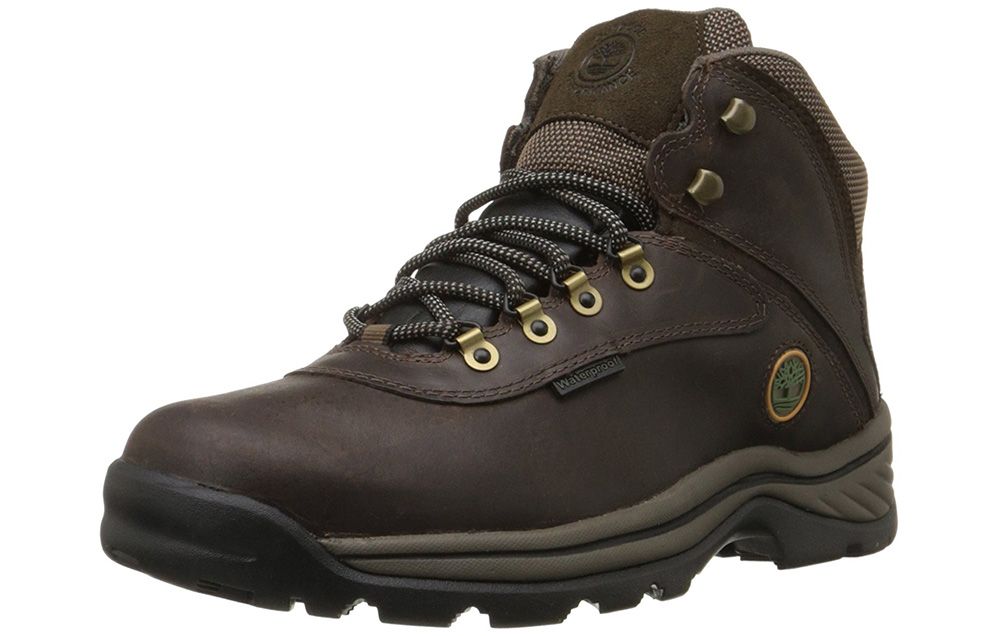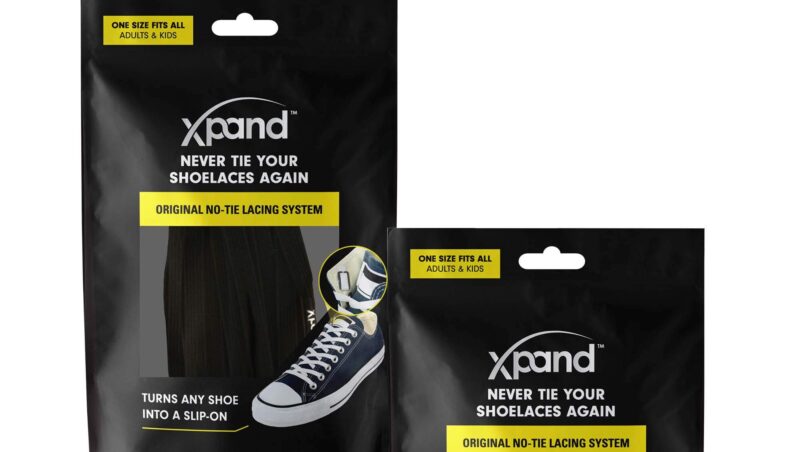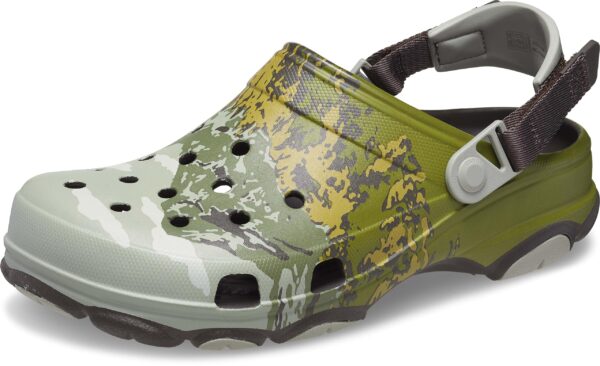Embarking on an outdoor adventure calls for proper gear, and hiking boots provide the support and protection your feet need. With the right pair, you can confidently explore various terrains and enjoy your time in nature.
When it comes to choosing the perfect hiking boots, several factors come into play, including comfort, durability, and functionality. Ensuring your boots meet these criteria will guarantee a more enjoyable hiking experience, while helping to prevent injuries and discomfort along the way.
As you dive into the world of hiking boots, remember to consider factors such as waterproofing, ankle support, and tread to match your specific needs and preferences. The ideal pair will enhance your hiking experience and keep your feet happy throughout your adventures.
Types of Hiking Boots
When considering hiking boots, it’s essential to understand the different types available to ensure the best choice for your outdoor adventures. In general, hiking boots can be categorized into three main types: lightweight hiking boots, midweight hiking boots, and heavy-duty hiking boots.
Lightweight Hiking Boots
Lightweight hiking boots are perfect for day hikes and short backpacking trips. These boots prioritize comfort and mobility, making them an ideal option for those who prefer agile and quick movement on the trails. They often feature breathable materials and a more flexible construction. Some popular lightweight hiking boots include the Salomon Men’s X Ultra 4 Mid GTX and the Merrell Men’s Moab 2 Mid Waterproof.
Midweight Hiking Boots
Midweight hiking boots strike a balance between weight, support, and durability. They are a versatile option for those who enjoy a variety of terrains and hiking durations. Midweight boots often feature sturdier, more supportive constructions than lightweight boots while still maintaining a reasonable weight. The Salomon Quest 4 Gore-Tex hiking boot is an excellent example of a midweight hiking boot.
Heavy-Duty Hiking Boots
Heavy-duty hiking boots are designed for tough terrain, long-distance treks, and carrying heavy loads. These boots prioritize durability, support, and stability. Full-grain leather is a common material used in heavy-duty boots, which provides excellent water resistance and abrasion resistance. The stiff construction offers maximum support and protection but may require a longer break-in period. One example of a heavy-duty hiking boot is the full-grain leather backpacking boot.
When choosing your hiking boots, consider the intended use, preferred terrain, and anticipated duration of your hikes. By understanding the differences between lightweight, midweight, and heavy-duty hiking boots, you can make an informed decision based on your specific needs and preferences.
Materials and Construction
In this section, we will discuss the materials and construction techniques used for hiking boots to ensure support, protection, and outdoor adventure readiness.
Upper Material
When it comes to durability and support, the upper material of your hiking boots plays an essential role. Generally, uppers are made of synthetic materials, like nylon and polyester, which are lightweight, cost-effective, and fast-drying (Popular Mechanics). Microfiber materials are also commonly used to deliver a good balance between durability, comfort, and breathability.
Waterproofing and Breathability
A great pair of hiking boots needs to provide both waterproofing and breathability. Gore-Tex is a popular waterproofing material used in premium boots. It helps to keep your feet dry while allowing air to circulate to prevent excessive sweating. Proper waterproofing reduces the risk of blisters and other issues caused by moisture and promotes overall foot health during your outdoor adventures.
Midsoles
Midsoles are crucial for cushioning and impact absorption during long hikes. They are commonly made of ethyl-vinyl acetate (EVA), which offers excellent shock absorption and lightweight cushioning, or polyurethane (PU), providing increased stability, durability, and support (Camotrek).
Outsoles
The outsoles form the base of your hiking boots, offering traction and grip on various terrains. Vibram outsoles are known for their durability, grip, and ability to maintain traction on slippery surfaces. Outsoles typically feature multidirectional lugs that provide improved grip and stability while hiking.
Comfort and Fit
When it comes to hiking boots, comfort and fit are essential for a successful outdoor adventure. In this section, we will discuss proper sizing, width and toe box, and the lacing system to ensure your feet stay comfortable and protected on the trail.
Proper Sizing
Finding the right size for your hiking boots is crucial. It’s important to try on boots with the socks you plan to wear while hiking. Keep in mind that your feet may swell during a hike, so give yourself a little room for that. To ensure a proper fit:
- Stand up while trying them on, as this will help you determine if you have enough space in the boot.
- Wiggle your toes to make sure you have enough room in the front.
- Walk around to verify the boots do not pinch or cause discomfort.
Width and Toe Box
The width of a hiking boot is another critical aspect to consider. Hiking boots should have a wide toe box to provide ample space for your toes to spread out as needed. This helps prevent blisters and ensures overall comfort. Make sure your boots provide enough room for your feet without being too loose. If the boots feel excessively wide, consider trying a different brand or model, as they differ in fit and width options.
Lacing System
An effective lacing system can significantly impact the comfort and support of your hiking boots. Different boots offer different lacing options, such as:
| Lacing Type | Description |
|---|---|
| Traditional Laces | These laces consist of a round or flat shape and are widely used in hiking boots. They hold up well over time and provide a secure fit. |
| Quick-lace Systems | Offering a simple pull-and-lock mechanism, these laces provide a quicker and more even distribution of pressure across your foot. |
| Hook and Loop | These systems are simple and easy to adjust, providing a secure fit without complicated laces. |
Choose a lacing system that provides adequate support and doesn’t cause pressure points or discomfort. Don’t forget to adjust the laces during your hikes to avoid blisters and maintain a comfortable fit.
Support and Stability
When choosing hiking boots for outdoor adventures, support and stability should be top priorities. In this section, we’ll cover the importance of ankle support, midsole support, and outsole traction.
Ankle Support
Proper ankle support is crucial for protecting your ankles from sprains and strains, especially during long hikes or treks over uneven terrain. A good hiking boot should have a high, padded collar that wraps securely around your ankle, providing both comfort and stability. The Oboz Bridger Mid B-Dry Hiking Boot, for example, features a supportive design for added ankle protection.
Midsole Support
Midsole support is responsible for absorbing shock and offering cushioning as you walk. Typically, hiking boots use foam midsoles made from either EVA (ethylene-vinyl acetate) or polyurethane materials. EVA midsoles are lightweight and offer excellent cushioning, while polyurethane midsoles are more durable and provide better stability.
When assessing midsole support, consider factors like the type of terrain you will frequently encounter and the weight of your backpack. For instance, backpackers carrying heavy loads may require more supportive midsoles, like those found in the Salomon Quest 4 Gore-Tex hiking boot.
Outsole Traction
Grippy outsoles are essential for maintaining traction on a variety of surfaces, such as rocky trails, slippery slopes, or muddy paths. Look for hiking boots that have deep, multidirectional lugs, which can enhance grip and stability. Additionally, a good heel brake can help prevent slips and falls during steep descents.
Many high-quality hiking boots, like the Salomon X Ultra 4 Mid GTX, incorporate these outsole features to ensure maximum traction during your outdoor adventures.
By carefully considering ankle support, midsole support, and outsole traction when selecting your hiking boots, you can help ensure a comfortable and stable experience during your outdoor explorations.
Best Hiking Boots for Men and Women
When it comes to outdoor adventures, having the right hiking boots is crucial. They provide the necessary support and protection for your feet as you navigate through various terrains. The following sections will discuss the best overall, best lightweight, best waterproof, and best budget hiking boots for both men and women.
Best Overall
For men, the Salomon Quest 4 Gore-Tex can be considered as the best overall hiking boot. With its excellent grip, stability, and GORE-TEX lining, this boot offers exceptional performance in any condition. On the other hand, the La Sportiva Ultra Raptor II Mid GTX stands out for women, offering comfort, lightweight design, and breathability for long hikes.
Best Lightweight
For those who prioritize lightweight hiking boots, the Lowa Renegade GTX Mid is an excellent choice for both men and women. The boots offer a perfect combination of support, durability, and comfort, all while being lightweight. These boots are particularly suitable for those who want to move quickly on the trails without compromising on support.
Best Waterproof
Ensuring dry feet during your hikes is essential, so having a reliable waterproof hiking boot is a must. The Salomon X Ultra 4 Mid GTX boots offer exceptional water resistance, making them an excellent choice for both men and women. These boots are designed with a GORE-TEX membrane, ensuring that your feet remain dry even in the wettest conditions.
Best Budget
If you’re looking for affordable but reliable hiking boots, the Merrell Moab 3 Mid Waterproof boots are a great option for men. They are supportive, comfortable, and offer a secure fit right out of the box, all at a budget-friendly price. For women, the Merrell Bravada 2 can be considered as a budget-friendly alternative that offers excellent traction and durability.
Additional Considerations
When choosing the perfect hiking boots for your outdoor adventures, there are some additional factors you should take into account. In this section, we’ll discuss the importance of weight and durability, the intended use and terrain, as well as the seasons and climate.
Weight and Durability
The weight of your hiking boots can significantly impact your overall experience on the trail. Lighter boots typically offer more agility and less fatigue during long hikes. However, durability should not be sacrificed for the sake of weight reduction. To strike the right balance between these two aspects, consider the following:
- Materials: High-quality materials such as nubuck leather, gore-tex or waterproof textiles offer a combination of durability and lighter weight.
- Design: Some hiking boots are specifically designed to be both lightweight and durable, such as the Salomon Quest 4 Gore-Tex and the Salomon Men’s X Ultra 4 Mid GTX.
- Reinforcements: Look for boots with reinforced areas, such as toe caps and heel counters, which provide extra protection without adding much weight.
Intended Use and Terrain
It’s essential to consider the specific outdoor activities you’ll be engaging in and the type of terrain you’ll encounter while wearing your hiking boots. Different boots cater to different needs, so keep these factors in mind when making your decision:
- Backpacking: For longer, multi-day hikes with a heavy backpack, you may require more support and stability. Consider options like the Lowa Renegade GTX Mid Boot.
- Day hiking: For shorter hikes on moderate terrain, lighter and more flexible boots may be ideal. The Merrell Men’s Moab 2 Mid Waterproof is a suitable choice.
- Technical terrain: If your hikes involve rocky, uneven, or challenging surfaces, boots with excellent traction, such as the KEEN Tempo Flex, might be more suitable.
Seasons and Climate
The weather and climate during your hikes should also influence your choice of hiking boots. Different boots cater to varying seasonal conditions, so consider the following:
- Summer: For hot, dry weather, opt for breathable, lightweight options like the KEEN Men’s Circadia Waterproof Mid Boot.
- Winter: If you’ll be hiking in colder, snowy conditions, insulated and waterproof hiking boots are essential, like the Salewa Mountain Trainer Mid GTX.
- Rainy or wet conditions: Choose boots with waterproof materials, such as gore-tex, to keep your feet dry and comfortable, like the Scarpa Rush Mid GTX for women.
Frequently Asked Questions
When it comes to hiking boots and outdoor adventures, you might have some common questions. In this section, we’ll answer a few frequently asked questions to help you make the best decision for your wilderness gear.
What should I look for in hiking boots?
The most important factors to consider when choosing hiking boots are support, protection, and comfort. Look for boots with good ankle support, especially if you plan on hiking on uneven terrain or carrying a heavy backpack. A protective toe cap and reinforced heel can help keep your feet safe from sharp objects like rocks. Additionally, consider the boot’s waterproofing capabilities and breathability to keep your feet dry and comfortable during your hike. (source)
Are lightweight hiking boots better for long treks?
Lightweight hiking boots can be more comfortable for long treks as they reduce fatigue and allow for more agile movement. However, make sure to choose a boot that still offers ample support and protection, such as the Salomon Men’s X Ultra 4 Mid GTX or Salomon OUTpulse Mid Gore-Tex.
How should I maintain my hiking boots?
Proper care and maintenance can significantly extend the lifespan of your hiking boots. Clean your boots regularly with a brush and mild soap, especially after muddy or dusty hikes. If your boots have a waterproof membrane, use a specialized waterproofing treatment to maintain their effectiveness. Always store your boots in a cool, dry place to prevent damage from moisture and heat.
Do I need to break in my hiking boots before hitting the trails?
Breaking in your hiking boots before heading out on a hike is essential for preventing blisters and discomfort. Start by wearing your boots around the house, then gradually increase the time you spend in them, including short walks on easy terrain. This process allows the boots to conform to your feet and will help in ensuring a comfortable fit during your wilderness adventures.




